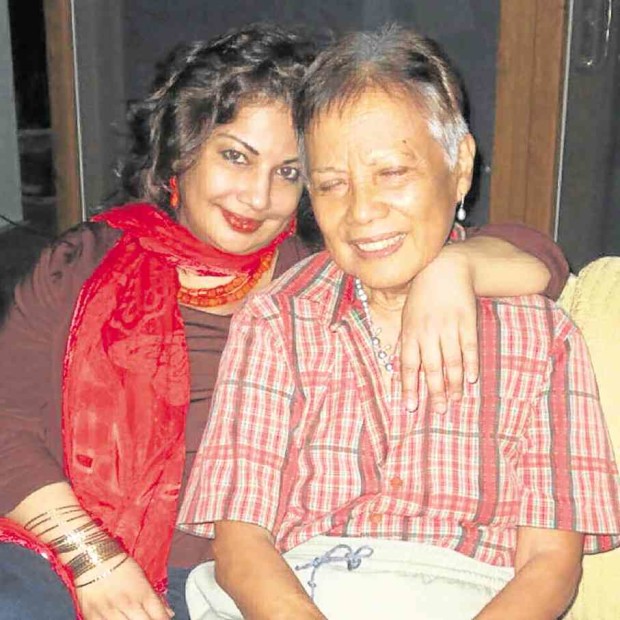For Lila Shahani, it was “never easy” being the only daughter of “a single mom raising 3 precocious children at a time when women were expected to stay home.”
She added: “I cannot remember a time when my mom was not working… (so) we rarely did stuff that mothers and daughters normally do.”
Even school became a matter of geopolitical importance, the younger Shahani mused. “She sent me to Immaculate Concepcion Academy in San Juan in the ’70s to learn Mandarin and prepare for a world that she was certain would be dominated by China. How prescient indeed! ” But Lila recalled being “this strange-looking Indian girl in an ocean of Chinese girls.”
Her work kept her mother so “busy and distant” that she often felt “disconnected and abandoned,” Lila said in her eulogy at the memorial service in the Department of Foreign Affairs on Friday.
There were happy interludes to be sure, like when they learned to snow ski in Austria, and she told her mother ‘not to look to the end of the hill, to take each turn as it came without worrying abut the long-term outcome.’ Lila added: “To the end, she thanked me for that.”
When Shahani was diagnosed with cancer three years ago, her daughter decided to move back home to take care of her. She had built a farm, her own version of Walden Pond, she said of her mother who had a college and a master’s degree in literature. The senator had reinvented herself as a farmer, imported some Indian Murrah buffalos for their milk and cheese and developed a solar-powered farm where she grew exotic tropical flowers.
Never been happier
“Between chemo treatments and vegetable juicing, she insisted on going to the farm to check on the delivery of a new batch of earthworms or pull out weeds,” Lila said. Sundays were spent at her stall at Legaspi Market in Makati City where she exchanged news and tips with other organic farmers. She was working till the end, “but she was happier than she had ever been.”
Watching movies, plays and concerts, and talking for hours, the two bonded “like we were making up for lost time,” Lila recalled, adding that stories poured about her mother as a young girl: how she crawled inside her grandparents’ kulambo while they smoked opium, how she and her siblings, including former President Fidel Ramos, hauled small crabs on the shores of Lingayen Gulf and collected the fat (aligue) that they would eat with newly cooked rice.
That may be why she had such a strong attachment to the West Philippine Sea—“it was an integral part of her growing up years,” her daughter said. Shahani would also tell her of Bajo de Masinloc and how the men wanted to go there for work “and also, this said with a knowing look, to visit the prostitutes.”
In Ermita where they lived before the war, Shahani was an avid pianist, “taking with her a piece of plywood with the piano keys precisely drawn in to practice her Hanon and Czerny silently as they escaped from the city during the Battle of Manila,” Lila recounted. She had always been resourceful, she said, adding that her mother had attached a motor on her bicycle so she could ride around Scotland more freely.
Shahani was in college when she met Ranjee, an Indian academic who was much older, Lila said of her father. It was a courtship that spanned 15 years and three continents, and one that led to a “deeply epistolary relationship.” They wrote “volumes to each other during those years,” she added.
He died of cerebral hemorrhage when she was barely 2.
As she caressed her mother’s forehead at the hospital, Lila recalled: “Years passed in that touch, mutual forgiveness came forth, an infinite love, sudden joy amidst so much pain… I wanted to birth her into the after life the way she had birthed me into this life.”—PENNIE AZARCON-DELA CRUZ
